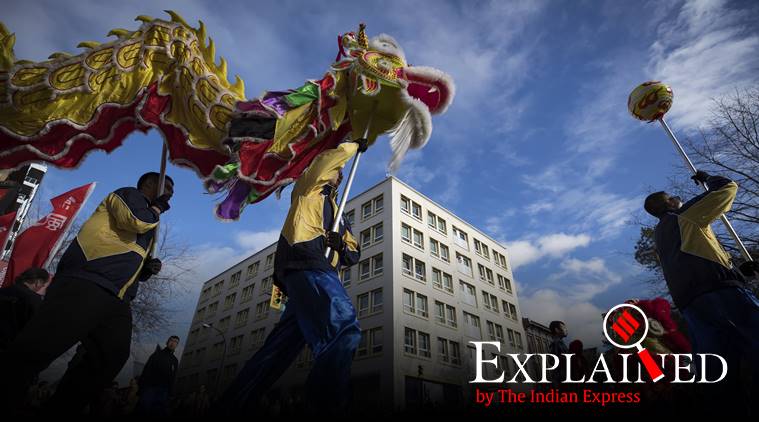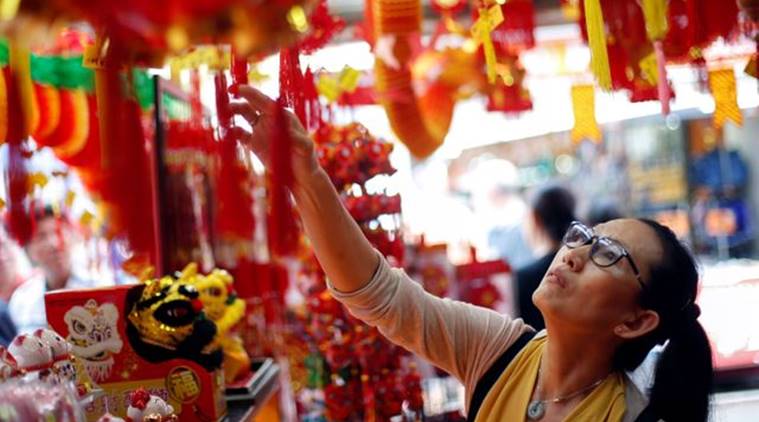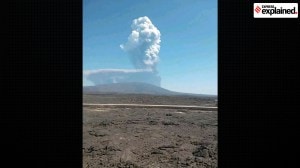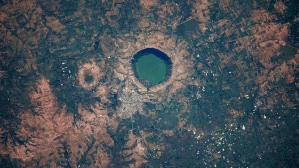Chinese New Year: All you need to know about the Spring Festival
This year, Chinese New Year started on January 25. The festival typically ends after 15 days of celebrations. It marks the start of the Lunar New Year and follows the lunar calendar, and hence, falls on a different date every year.
 Dancers perform a dragon dance during the Chinese New Year Parade. (Photo via AP)
Dancers perform a dragon dance during the Chinese New Year Parade. (Photo via AP)
This weekend, millions of people in China, parts of Southeast Asia, the US, Australia, and even Kolkata will celebrate Chinese New Year.
Some observers say the festival witnesses the world’s biggest human migration, as millions travel from big cities and urban centers in China to rural hometowns. In some cases, this migration occurs in the form of trans-Atlantic travel, as overseas residents travel home for the festival.
Chinese New Year: When it is celebrated?
This year, Chinese New Year started on January 25. The festival typically ends after 15 days of celebrations. The festival marks the start of the Lunar New Year and follows the lunar calendar, and hence, every year, it falls on a different date. Another name for the festival is Spring Festival, as it marks the end of the brutal winter and the start of a new season.
According to Chinese traditions, each year is represented by one of the 12 Chinese zodiacs; Rat, Ox, Tiger, Rabbit, Dragon, Snake, Horse, Goat, Monkey, Rooster, Dog, Pig. 2020 will be the year of the Rat.
How is Chinese New Year celebrated?
In the run-up to the Chinese New Year, streets are decked up with red paper lanterns and other decorative objects, due to the Chinese belief that the colour is auspicious. Stores begin stocking up on rice cakes, meats, spices and other ingredients integral to Chinese New Year recipes.
Common foods eaten during the festival include fish preparations, dumplings, spring rolls and various meat preparations. Egg noodles, called ‘Longevity Noodles’, are typically eaten during the festival. The name comes from the term “long life”, with the long noodle strands representing a long life span. They should be eaten whole for luck. Glutinous rice cakes called nián gao, translated to ‘New Year’s Cake’, symbolise growth and prosperity.
Local food traditions over the years have been incorporated and adapted for Chinese New Year in various parts of the world. Fireworks and lion dances in public spaces are also integral parts of Chinese New Year traditions. During the two-week festival, workers typically get a week off to celebrate.
Which countries celebrate Chinese New Year?
Countries with large Chinese populations, like Singapore, Indonesia, Malaysia, Thailand, Cambodia and the Philippines, celebrate the festival. Kolkata’s Chinese community holds private as well as public festivities. Immigrants in Europe, the US, Canada and Australia also celebrate Chinese New Year.
 A woman shops for Chinese New Year decorations. (Reuters Photo: Feline Lim)
A woman shops for Chinese New Year decorations. (Reuters Photo: Feline Lim)
Why is travel during this time important?
The New Year is a time for families to get together. In China, particularly, the population comprises large numbers of migrant workers in cities and towns far away from their hometowns, and the festival means these workers travel long distances to be with their families. The travel season, which starts two weeks prior to the Chinese New Year, is called ‘Chunyun’. For many migrants, it is their only chance to be with their families during the year.
Explained: How has coronavirus impacted Chinese New Year?
‘Chunyun’ this year comes at a time when China is battling a deadly outbreak of coronavirus. The outbreak has severely impacted people’s ability to celebrate the festival due to travel restrictions across the country.
China is taking drastic measures to contain the virus. Airports across the country are screening passengers for signs of fever, cough and cold, and high body temperatures — symptoms of coronavirus.
Wuhan, the epicenter of the outbreak with a population of 11 million, is among the cities that have been put on lockdown by the Chinese government. Public transport has been halted and entry into and exit from Wuhan is being closely monitored and controlled.
The death toll due to the virus in China rose to 106 Tuesday, with more than 4,500 people infected.
Don’t miss from Explained | Why China has emerged as the epicentre of global outbreaks of disease



- 01
- 02
- 03
- 04
- 05



































